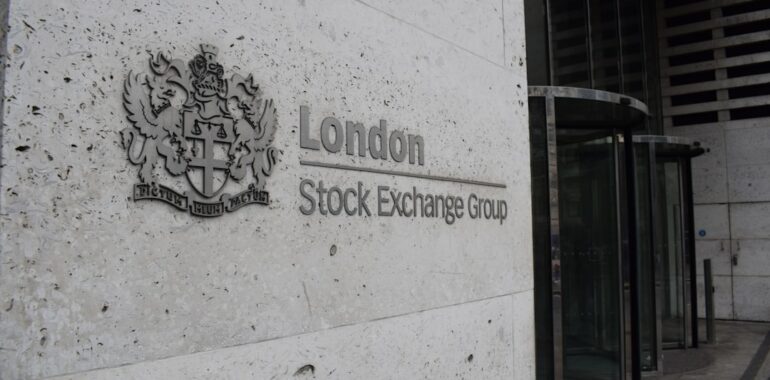Understanding Stock Short Squeeze: How It Works and Key Examples

Alt: Grayscale photography of London Exchange Group building
Title: Stock Short Squeeze – London Exchange Group Building
Discover the dynamics of a stock short squeeze, its impact on the financial markets, and notable instances like the GameStop phenomenon in our comprehensive guide.
What is a Stock Short Squeeze?
A stock short squeeze occurs when a heavily shorted stock experiences a rapid price increase, forcing short sellers to buy back shares to cover their positions. This surge in buying activity drives the stock price even higher, creating a cycle that can lead to significant financial repercussions for those who bet against the stock.
Key Definitions
- Short Seller: An investor who borrows shares of a stock they believe will decrease in value, sells them, and aims to repurchase the shares at a lower price to profit from the difference.
- Long Position: When an investor buys and owns a stock with the expectation that its price will rise over time.
Understanding Long and Short Positions in a Short Squeeze
To comprehend the mechanics of a short squeeze, it’s essential to differentiate between long and short positions.
What is a Long Position?
Investors holding a long position own the stock outright, anticipating that its value will increase. They profit from the rise in stock price and can hold the investment indefinitely.
What is a Short Position?
Conversely, a short position involves borrowing shares and selling them with the intention of buying them back later at a lower price. If the stock price declines as expected, short sellers can repurchase the shares at the reduced price, return them to the lender, and pocket the difference as profit. However, if the stock price rises, short sellers face unlimited losses, as there’s no cap on how high a stock’s price can go.
How Does a Stock Short Squeeze Work?
A short squeeze unfolds through a series of escalating events:
Step 1: Short Sellers Borrow and Sell Stock
Short sellers borrow shares of a stock they anticipate will drop in value and sell them at the current market price.
Step 2: Stock Price Begins to Rise
Contrary to the short sellers’ expectations, positive developments or increased buying interest push the stock price upwards.
Step 3: Pressure Builds on Short Sellers
As the stock price rises, short sellers start incurring losses and feel compelled to buy back shares to minimize further losses, known as “covering” their positions.
Step 4: Increased Buying Activity
The act of covering by short sellers adds more buying pressure to the stock, further driving up its price.
Step 5: Escalation of the Squeeze
More short sellers rush to cover their positions to avoid mounting losses, creating a feedback loop that propels the stock price even higher.
Step 6: Short Squeeze Peak
The stock price reaches a peak as the relentless buying pressure from short sellers and new investors drives the price to unprecedented levels, often far above the stock’s intrinsic value.
Real-World Examples of a Short Squeeze in Action
The Volkswagen Squeeze (2008)
In 2008, Volkswagen became the center of one of the most dramatic short squeezes in history. Amid the financial crisis, short sellers bet against Volkswagen, anticipating a decline in its stock price. However, Porsche announced a significant increase in its stake, reducing the available shares and creating a scarcity. As short sellers scrambled to cover their positions, Volkswagen’s stock price soared to over €1,005 per share, briefly making it the world’s most valuable company. This event resulted in massive losses for short sellers and substantial profits for Porsche.
The GameStop Squeeze (2021)
The January 2021 short squeeze of GameStop highlighted the power of retail investors and online communities. With over 100% short interest, GameStop was a prime target for a short squeeze. Driven by discussions on Reddit’s WallStreetBets and endorsements from influential investors, the stock price surged from under $20 to a peak of $483 per share within weeks. This meteoric rise forced major hedge funds to incur billions in losses as they covered their short positions, showcasing the impact of coordinated retail trading on the stock market.
What Happens After a Short Squeeze?
Once a short squeeze completes, the stock price often stabilizes or declines as the initial buying frenzy subsides. Short sellers who were forced to cover their positions may no longer be active, reducing the buying pressure. Additionally, the increased volatility during a short squeeze can lead to more cautious trading behavior, potentially resulting in a return to more typical market dynamics.
Risks of Short Squeeze Trading
Engaging in short squeeze trading involves substantial risks:
- High Volatility: Stock prices can fluctuate wildly, making it difficult to predict the right time to buy or sell.
- Timing Challenges: Entering the squeeze late may result in purchasing shares at inflated prices, leading to significant losses if the stock price subsequently falls.
- Unlimited Losses: Unlike long positions, where losses are limited to the initial investment, short positions can result in unlimited losses as there’s no ceiling on how high a stock’s price can rise.
- Market Manipulation Concerns: Attempts to artificially trigger a short squeeze can lead to regulatory scrutiny and potential legal consequences.
Given these risks, short squeeze trading is generally advised only for experienced investors who thoroughly understand the complexities involved.
Spotting Short Squeeze Stocks
Identifying potential short squeeze opportunities involves analyzing specific indicators:
- Short Interest: High short interest, typically over 20%, indicates a significant number of shares have been sold short, increasing the potential for a squeeze.
- Short Interest Ratio (Days to Cover): This ratio measures how many days it would take for short sellers to cover their positions based on the stock’s average daily trading volume. A higher ratio suggests a greater likelihood of a short squeeze.
- Relative Strength Index (RSI): An RSI below 30 can signal that a stock is oversold, potentially indicating a short squeeze if buying momentum increases.
- Buying Pressure: Sudden increases in buying activity can trigger a short squeeze by pushing the stock price upwards.
Wrapping Up
A stock short squeeze represents a fascinating interplay of market forces, where the conflict between short sellers and long-position investors can lead to dramatic price movements. While short squeezes can generate substantial profits for investors holding long positions, they pose significant risks for those betting against a stock. Understanding the mechanics and indicators of a short squeeze is crucial for navigating these volatile market scenarios effectively.
Are you intrigued by the dynamics of stock short squeezes and want to stay ahead in the financial markets? Join our community at Superstonk to gain deeper insights, access exclusive resources, and connect with fellow investors navigating the complexities of the stock market.




